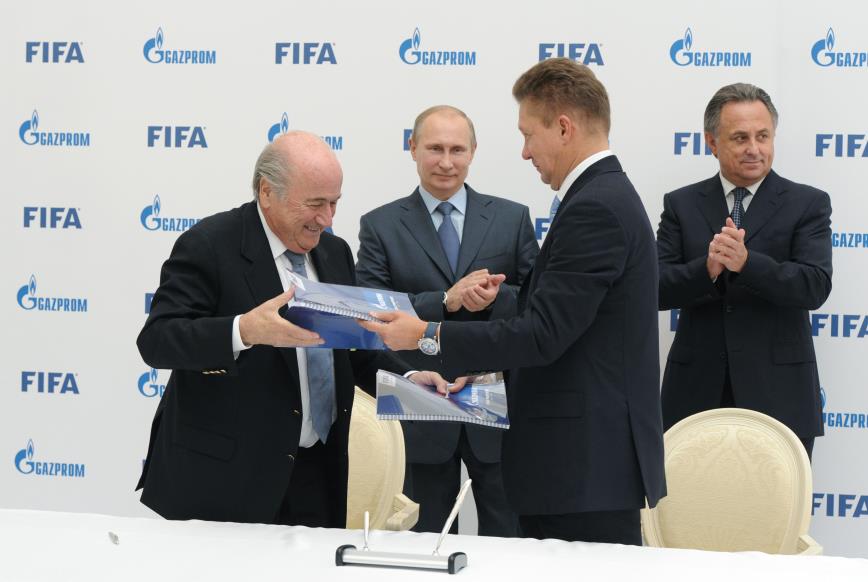The FIFA World Cup is truly a world brand. That is most fitting as it is the culmination of the most important international tournament of the world’s leading sport, football. Last year the Final of the World Cup, between Germany and Argentina in Brazil, was watched by an estimated ONE BILLION viewers or one in six of the population of the planet. No surprise then that the World Cup is an unrivalled space for commercial brands and a platform for the FIFA partners to have access/potential to communicate with in excess of 50% of the population of the planet.
In total the total viewing figures across the tournament in 2014, for television alone, reached four billion. Records were set at every turn. From Europe to the Americas and beyond into the blossoming markets of Asia and the Middle East new viewing records were set. The Final itself became the most watched television programme in Germany, Belgium and the Netherlands, ever. Then of course there are the online and social media outlets which makes association with the FIFA World Cup perhaps the most attractive marketing tool possible and one which brands, from global companies such as Adidas, Sony and many others, to more regional commercial brands, clamour for. Viewing figures are set to rise for the 2018 World Cup in Russia and again for the 2022 World Cup in Qatar.
So, what do companies expect and what do they get for the millions of dollars, euros, pounds etc they pay to be associated with the world governing body?
In essence what they get is exposure and anticipation of increased sales to the global audience that devours every kick of a World Cup finals tournament. FIFA, for their part do not just sit back and take the money, they in return offer a variety of deals which are basically divided into three categories with varying degrees of cost and benefit. The third category has just been introduced, ahead of the 2018 finals, and for the first time offers regional packages.
The primary group of companies, containing organisations who pay the really big money, are referred to as FIFA World Cup Partners. They are Adidas, Coca Cola, Sony, Hyundai, Emirates and Visa and as Partners they spent $730 million for the privilege of having the highest level of association for the 2014 World Cup.
Next in order of prominence are the World Cup Sponsors who handed over in excess of $500 million, including global brands such as Budweiser and McDonalds. Then comes the new group, National or Regional Supporters, whose contribution to the FIFA coffers is around $170 million.
FIFA World Cup Partners enjoy the highest level of exposure at all FIFA events as well as playing a wider role in supporting the development of football around the globe. So it is much more than short term, indeed Partners invest in a legacy that extends well beyond the expiry of any contract.
Partners are guaranteed exposure in all stadia, all official publications as well as the FIFA website. They also get direct advertising, promotional opportunities and preferential access to television advertising.
FIFA World Cup Sponsors have the rights to the FIFA Confederations Cup and the FIFA World Cup, on a global basis and enjoy strong brand association with those global tournaments, use of selected marketing assets and media exposure in addition to ticketing and hospitality.
The new group of sponsors with FIFA, the Regional Supporters, allows companies, within a pre-defined global region, to promote an association with the FIFA World Cup in a domestic market.
This approach offers commercial affiliates a more specific, targeted way for them to engage with their target audience if they do not have the desire, or means, to cover a significant geographical region. Basically a bespoke association tailored to specific requirements. So, for example, a company wishing to target South America can acquire rights to do so without having to purchase a global package.
Is World Cup sponsorship worth it? Well, the 2014 finals in Brazil generated $4 billion; $1.4 billion was the total amount of sponsorship revenue from 22 companies and $2.6 billion came from television rights. More detailed figures usually take longer to appear in the public domain but to put into context evaluating the worth of World Cup sponsorship, between the 2006 finals, in Germany, and the 2010 South African tournament sponsorship revenue increased by 33%. Revenues will only increase for Russia 2018 and Qatar 2022.
The importance of what sponsors get and what FIFA receives from their sponsors and partners goes way beyond money. The work FIFA carries out in developing football across the globe has been underlined by the governing body’s Director, Marketing Division, Thierry Weil. He said recently.
“Our sponsors not only offer financial support to the events but logistical support on the ground. Without such support events such as the FIFA World Cup would simply not be possible.”
An ever increasing number of the world’s population wants part of the FIFA World Cup. From hundreds of millions who sit at home watching the beautiful game from some distant destination to those who participate and including those companies who pay handsomely for the privilege of being a Partner or a Sponsor, there are innumerable benefits to the world’s most famous tournament which headlines the most popular sport on the planet.
Written by Brian Beard

